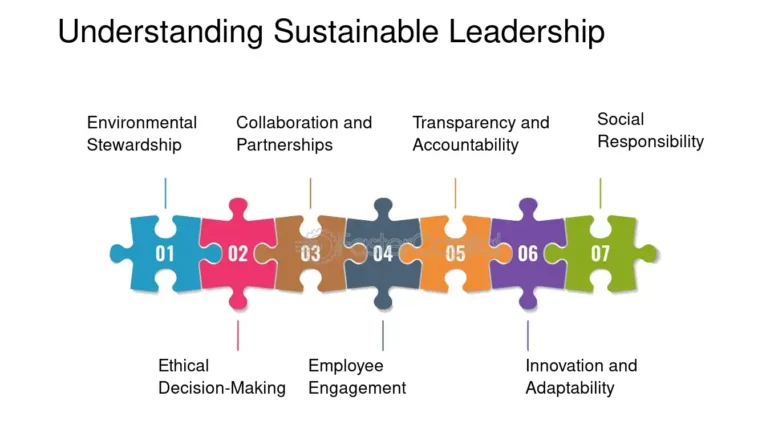In today’s rapidly changing world, environmental challenges can no longer be considered as issues of the periphery. They have taken a central position in economic decision-making. Climate change, resource depletion, and regulatory pressures are compelling firms to adopt new operating philosophies. More and more businesses that succeed are those whose leadership listens—not just to shareholders, but to the planet. What was once perceived as idealistic or optional green leadership is now a competitive necessity.
What Is Green Leadership?
Green leadership is defined as a management style that initiates and integrates environmental sustainability into the core business strategy. This is more than corporate social responsibility and token gestures; it means inculcating eco-conscious decision-making at all levels of the organization.

Such leaders evaluate the environmental impact of their decisions; they innovate with sustainability as a focus and create awareness about good environmental practices both within and outside the organization.
The Business Case: How Sustainability Drives Profit
Such a practice, to be more environmentally conscious, is assumed by many to be at the expense of profitability. However, that has been the reverse more times than not. Studies have shown that long-term cost savings can be achieved with green strategies alongside risk management and brand enhancement. For example, in sustainable businesses, energy bills are cut through efficiency upgrades, and material waste is reduced through circular design; such businesses often see financial returns because of their sustainability.
In addition, it is driving environmental responsibility. Customers and consumers are now leading a trend of values-based brand selection. This is no longer just about ethics. The question is—has it become profitability-driven?
Green Transformation as Competitive Strategy
Firms that integrate sustainability into their innovation pipelines are leading their industries. For example, Patagonia, Unilever, and Tesla have demonstrated that realignment to green values can change market dynamics and create worldwide brand loyalty. This is not environmentalism as an afterthought—it is strategy.

Green transformational leadership inspires the group to think in new and creative ways about how to use resources, reveal the supply chain, and the life cycles of products. It encourages innovation, helps to find good workers, and makes the group strong against future rules or when there is not enough material.
From Compliance to Commitment: Going Beyond the Minimum
Environmental compliance used to be considered reactive—just the bare minimum in terms of meeting regulations. Proactive green leaders, however, go beyond that, and sustainability becomes a core identity. They set science-based climate targets and invest in renewable energy, and work on product redesign to minimize environmental impact.
Commitment does pay off. Firms that are environmental leaders and also transparent frequently attain premium market valuations with lower volatility. Green leadership builds trust, it can be with consumers, regulators, or employees.
Measuring the Impact: Green Strategy and Financial Performance

Evidence linking environmental strategy to financial outcomes is mounting. Studies have shown that firms with strong environmental performance often experience:
- Higher return on assets (ROA)
- Greater long-term shareholder value
- Improved operational efficiency
- Lower legal and reputational risk
This relationship is particularly strong when sustainability is driven by leadership and embedded into strategy, not when it’s treated as a side initiative.
Leadership Mindset: From Extraction to Regeneration
Green leaders don’t simply manage- they transform. They make a shift in mindset from extractive growth to regenerative economics, investing in circular business models, advocating carbon-neutral operations, and engaging environmental justice issues.
This leadership is morally commendable and strategically wise. As climate threats intensify and stakeholder expectations rise, regenerative thinking will distinguish tomorrow’s industry leaders.
Collaboration for a Greener Future

The climate crisis is not a fighting opportunity for any single company. Effective green leadership calls for partnership across industries, governments, and civil society. From making sustainability partnerships to endorsing climate laws, leading proactively understands that collaboration yields greater results.
Leaders share best practices to help create green technologies and support environmental education, thus building a better future, not just a stronger one.
Sustainability Is Smart Business
Leadership that listens to the world is no longer a niche ideal— it’s a smart, scalable, and profitable strategy. As environmental pressures mount, businesses must evolve. Green leadership aligns long-term value with ethical responsibility, proving that doing good for the planet can also mean doing well financially.
Firms that do not want to change will fall behind. But the firms that want to lead with purpose, with transparency, and a vision that is conscious of the environment will do well in the green economy of the future.



